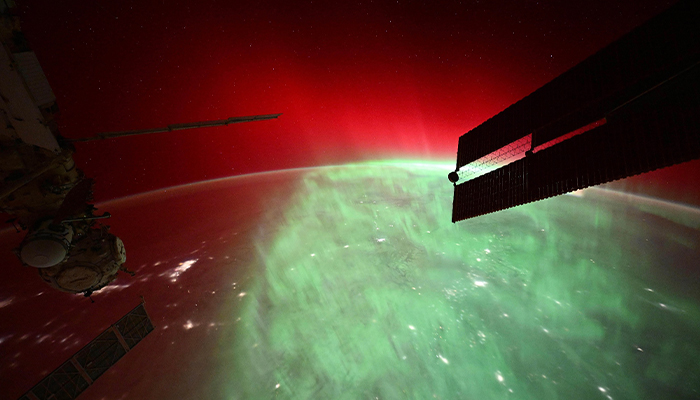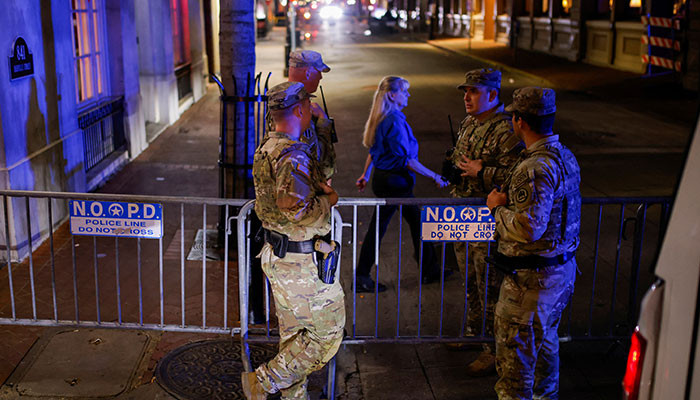US
Weighed down by urban atrocities
字号+ Author:Smart News Source:Health 2025-01-13 07:43:09 I want to comment(0)
IF the smog is poisoning Lahore, it is perpetual neglect that plagues Karachi. Over the course of the past decades, the original portion of the city has been allowed to reach the point of erasure. Beautiful buildings that once held cafes and hotels have turned into mere façades and now even those façades are being torn down. Despite laws and regulations ordaining the maintenance of heritage sites and the preservation of old buildings, areas of Soldier Bazar, Kharadar, Jamshed Road, Parsi Colony, Clifton, and M.A. Jinnah Road are before our very eyes. In some cases, good intentions have led to greater harm and even hazardous situations. One such project was the . Prior to the ‘clean-up’, the area outside was peopled by a swarm of hawkers who sold everything from shoes to clothes to African grey parrots. This meant that the exterior of the building was not clearly visible to the people who were driving or walking past the colonial-era structure. In recent years, the hawkers have been moved from the area so that the area around the original market building appears tidier and cleaner. However, because hawkers, too, had to search and find their livelihoods elsewhere, they moved into the arteries surrounding the building, clogging roads in the process. Instead of finding a proper place for the hawkers removed from Empress Market, they were forced to relocate themselves in nooks and crannies. In fact, a number of residential neighbourhoods in the old parts of the city are now surrounded by the din of commercial activities, such as the Parsi Colony, which is a living testimony to the city’s history. The decades have seen many residents — whose forebears had lived in the area much before the creation of Pakistan — leave, but observers have described the colony as serene. Sadly, with the eviction of hawkers from their traditional spots, the small vendors have no choice but to find places to sell their ware near such residential areas. In their remarkable essay, ‘ ’, architect Marvi Mazhar, Komal Rehman, and Ayesha Jamal portrayed how certain areas like Bahadurabad, KDA, Tariq Road, Ghanchi Para and others have seen incredible vertical growth. The absence of any centralised urban planning in the city means that unsightly high-rises have brought even more population densification without the basic needs of residents being catered to. The regular supply of water, proper sanitation, daily garbage removal, traffic redirection, and public parks for leisurely walks are all figments of the imagination in a city where growth continues with feral ferocity. Old residents complain of the disappearance of what were once tranquil neighbourhoods in Karachi. Old residents complain of the disappearance of what were once tranquil neighbourhoods that allowed for the maintenance of communal relationships. Now, people flit in and out of neighbourhoods, and this transience creates its own carelessness — why bother about making one’s neighbourhood more pleasant if it is only to be your neighbourhood for a small bit of your life? The transformation of the area around Abdullah Shah Ghazi’s mazar has rendered the locality almost unrecognisable in recent times. In previous years, seeing the shrine’s dome rise above the hillock on which it sat was a landmark that everyone knew and appreciated. Old Clifton, the area around the shrine, is also home to structures such as the Jehangir Kothari Parade. Though the landmark is still there, the overall aesthetic of Old Clifton has been drastically transformed. Malls and shops and restaurants with large, ugly flashing neon signs have made the place a lurid and hideous instance of crass consumerism. The towering stands ominously in the foreground. It is inexcusable that reportedly the developers of the tower thought it fit to renovate the shrine to conform to their own sense of aesthetics, rather than vice versa. As a result, something beautiful that was uniquely Karachi has been demoted to a replica of this or that building in one of the Gulf states. To blame are the and the equally damning lack of imagination whose only purpose appears to be an obliteration of the city’s heritage and dignity. The evisceration of the latter runs parallel to the harassment campaigns faced by many owners of high-value property in areas that developers are targeting for even larger monstrosities where people can be scuttled into small, poorly ventilated cubby holes. Stories abound of developers harassing old homeowners, and demanding that they sell large plots of land so that one of these buildings can be built and profits drawn from the occupants. Until now, no land regulation has been able to prevent these developers from trying to transform Karachi into a garish and pathetic version of Dubai on a budget. The pre-eminence given to consumer culture over community development and sustainable urbanisation means that it is just a matter of years before Karachi will come to resemble a large slum whose teeming, churning innards continue to spew smoke and pollution. This is urban festering at its worst, where some bare shape of a city is replaced by a revolting organism that condemns all lives within it to a meagre and aesthetically damned existence. No one is demanding a grand metropolis with hundreds of millions devoted to the . The ask from Karachi has always been small and reasonable: there should be neighbourhoods where life can flourish and people should have some idea of what existed on the ground on which they walk today and how their footsteps connect with those that traced the ground before them. When a city preserves its history and is serious about its future it forestalls becoming a place that people constantly want to escape. For how long must Karachi demand attention before it crumbles inwardly into itself?
1.This site adheres to industry standards, and any reposted articles will clearly indicate the author and source;
 Related Articles
Related Articles-
NON-FICTION: Life after life changed
2025-01-13 07:40
-
Despite mixed sentiment at PSX, KSE-100 gains 467 points
2025-01-13 06:59
-
Despite mixed sentiment at PSX, KSE-100 gains 467 points
2025-01-13 06:06
-
Morgan Stanley decides to leave sector climate coalition
2025-01-13 05:10
 User Reviews
User Reviews Recommended Reads
Recommended Reads Hot Information
Hot Information- Nine shot in rivals’ ambush over litigation
- Despite mixed sentiment at PSX, KSE-100 gains 467 points
- Despite mixed sentiment at PSX, KSE-100 gains 467 points
- Despite mixed sentiment at PSX, KSE-100 gains 467 points
- ADB suggests steps to make schools climate resilient
- Despite mixed sentiment at PSX, KSE-100 gains 467 points
- World Bank to lend Pakistan $20bn over 10 years: sources
- Despite mixed sentiment at PSX, KSE-100 gains 467 points
- Breathless Punjab
 Abont US
Abont US
Follow our WhatasApp account to stay updated with the latest exciting content













